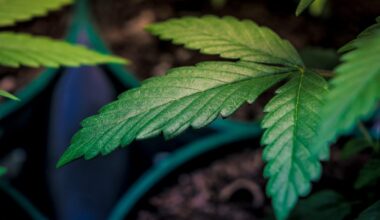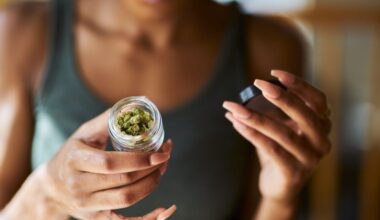A new study published by the American Medical Association (AMA) finds that the first sanctioned safe consumption drug sites in the U.S. have decreased overdose risk, steered people away from using in public and provided other ancillary health services to people who use currently illicit substances.
The research letter, published in AMA’s Journal of the American Medical Association, looked at data from two overdose prevention centers that opened in New York City late last year. Over the course of two months, trained staff at the sites intervened in 125 instances to mitigate overdose risk, administering naloxone and oxygen and providing other services to prevent deaths.
There wasn’t a single overdose death reported at the safe consumption sites, according to the study, which was conducted by NYC Department of Health and Mental Hygiene researchers, including a former commissioner of the department.
A total of 613 people utilized the harm reduction centers 5,975 times collectively from November 30, 2021 to January 31, 2022. At a top level, the study demonstrates that there’s demand for access to places where people can use illicit substances in a medically supervised environment without fear of criminal prosecution—and that the sites can save lives.
There have been studies on the impact of safe consumption sites in other countries, as well as underground facilities in the U.S., but this represents the first analysis of U.S. sites that are “publicly recognized” and sanctioned by a local government.
Today in @JAMANetworkOpen, we report the first peer-reviewed data from the first publicly-recognized overdose prevention centers in the U.S., operated by OnPoint NYC. 🧵https://t.co/8GT5tHkYRZ pic.twitter.com/mYCR6mIFNm
— Dave A. Chokshi, MD (@davechokshi) July 15, 2022
An analysis of self-reports showed that most people who visited the facilities used heroin or fentanyl (74 percent), and most injected the drugs intravenously (65 percent). Among those who utilized the harm reduction centers, 76 percent said they would have otherwise used the substances in a public or semi-public place.
That’s a telling statistic that could resonate with people who aren’t necessarily supportive of the idea of sanctioning illicit drug use. Not only are the services preventing overdose deaths and giving people access to treatment resources, but they appear to effectively deter public consumption activities and associated waste (e.g. used syringes).
During the first 2 months of overdose prevention center (OPC) operation, trained staff responded 125 times to mitigate overdose risk. No fatal overdoses occurred in the 2 centers.
— Dave A. Chokshi, MD (@davechokshi) July 15, 2022
“In response to opioid-involved symptoms of overdose, naloxone was administered 19 times and oxygen 35 times, while respiration or blood oxygen levels were monitored 26 times,” the paper says. “In response to stimulant-involved symptoms of overdose (also known as overamping), staff intervened 45 times to provide hydration, cooling, and de-escalation as needed.”
“Emergency medical services responded 5 times, and participants were transported to emergency departments 3 times,” the authors said. “No fatal overdoses occurred in OPCs or among individuals transported to hospitals.”
Additionally, more than half of those who used the sites (53 percent) received other health care services, including counseling, naloxone distribution, hepatitis C testing and holistic services like auricular acupuncture.
Among all participants, 75.9% reported that they would have used their drugs in a public or semipublic location if OPC services had not been available. pic.twitter.com/RzLGEG1Una
— Dave A. Chokshi, MD (@davechokshi) July 15, 2022
“This quality improvement study found that during the first 2 months of operations, services at 2 OPCs in NYC were heavily used, with early data suggesting that supervised consumption in these settings was associated with decreased overdose risk,” the study concludes. “Data also suggested that OPCs were associated with decreased prevalence of public drug use.”
“Findings are limited by the short study period and lack of a comparison group with individuals not participating in OPC services,” the paper says. “Additional evaluation may explore whether OPC services are associated with improved overall health outcomes for participants, as well as neighborhood-level outcomes, including public drug use, improperly discarded syringes, and drug-related crime.”
These early data suggest that overdose prevention center services are associated with decreased overdose risk as well as decreased prevalence of public drug use.
— Dave A. Chokshi, MD (@davechokshi) July 15, 2022
While New York is allowing the harm reduction centers to operate, and city health officials have touted the early results of the services, federal statute has been interpreted as barring such facilities, and the Justice Department is actively in litigation that started during the Trump administration over a Philadelphia-based non-profit organization’s attempt to open a safe consumption site.
The White House drug czar recently said that the Biden administration is reviewing broader drug policy harm reduction proposals, including the authorization of supervised consumption sites—and he went so far as to suggest possible decriminalization.
—
Marijuana Moment is tracking more than 1,500 cannabis, psychedelics and drug policy bills in state legislatures and Congress this year. Patreon supporters pledging at least $25/month get access to our interactive maps, charts and hearing calendar so they don’t miss any developments.![]()
Learn more about our marijuana bill tracker and become a supporter on Patreon to get access.
—
While the Biden administration is still investigating the clinical efficacy of such facilities, Office of National Drug Control Policy (ONDCP) Director Rahul Gupta said that the proposal to lift the existing federal ban is on the table.
DOJ said in February that it is actively “evaluating supervised consumption sites, including discussions with state and local regulators about appropriate guardrails for such sites, as part of an overall approach to harm reduction and public safety.”
In October, the Supreme Court rejected a request to hear a case on the legality of establishing the Safehouse facilities, but the case is still before a lower federal court. Safehouse plaintiffs say that they’ve had “productive” conversations with DOJ in recent months, which is part of the reason why they’ve mutually agreed to extend the deadline for a federal response in the case several times.
The National Institutes of Health (NIH) put out a pair of requests for applications (RFAs) in December for an effort that will provide funding for efforts to investigate how that and other harm reduction policies could help address the drug crisis.
Gupta previously said that it’s critical to explore “any and every option” to reduce overdose deaths, and that could include allowing safe consumption sites for illegal substances if the evidence supports their efficacy.
The secretary of the U.S. Department of Health and Human Services (HHS), Xavier Becerra, has also signaled that the Biden administration would not move to block the establishment safe injection sites, stressing that “we are literally trying to give users a lifeline.”
But a department spokesperson later walked those remarks back, stating that “HHS does not have a position on supervised consumption sites” and the “issue is a matter of ongoing litigation.” In any case, it would be up to DOJ to decide whether to pursue operators of the facilities under the Controlled Substances Act.
Meanwhile, a New York Assembly committee advanced a bill in May to establish a statewide safe consumption site program, allowing regulators to authorize facilities where people could use currently illicit drugs in a medically supervised environment.
The California Assembly approved a Senate-passed bill last month that would establish a pilot program to allow certain jurisdictions throughout the state to authorize safe consumption sites. Because the legislation was amended during the Assembly committee process, it must still return to the Senate for concurrence following the July recess before potentially heading to the governor’s desk.
In a setback for advocates, however, Vermont’s governor recently vetoed a bill that would have simply created a working group tasked with crafting a plan to open safe consumption sites.
A poll released in April found that a majority of Americans (64 percent) support allowing safe consumption sites.
Photo courtesy of Jernej Furman.
Medical Disclaimer:
The information provided in these blog posts is intended for general informational and educational purposes only. It is not a substitute for professional medical advice, diagnosis, or treatment. Always seek the advice of your physician or other qualified healthcare provider with any questions you may have regarding a medical condition. The use of any information provided in these blog posts is solely at your own risk. The authors and the website do not recommend or endorse any specific products, treatments, or procedures mentioned. Reliance on any information in these blog posts is solely at your own discretion.






